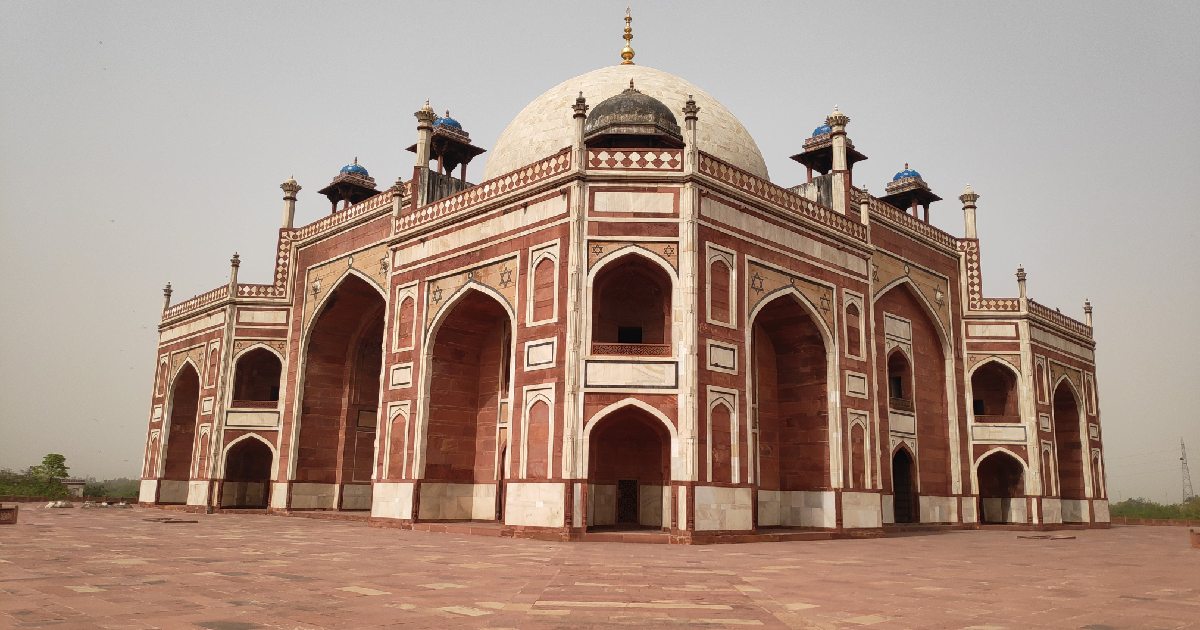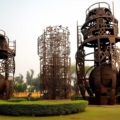Humayun’s Tomb, located in Delhi, India, stands as a magnificent testament to the grandeur of the Mughal Empire and the architectural brilliance of the era. This article delves into the rich history, intricate architecture, and cultural significance of this iconic monument.
Historical Background
The Mughal Dynasty, renowned for its cultural and architectural achievements, flourished in the Indian subcontinent during the 16th and 17th centuries. Humayun, the second emperor of the Mughal Empire, ascended to the throne in 1530 after the death of his father, Babur. Despite facing numerous challenges during his reign, Humayun left behind a legacy of art, literature, and architecture.
Architecture and Design
Humayun’s Tomb, commissioned by his widow, Empress Bega Begum, showcases a fusion of Persian and Indian architectural styles. Inspired by the magnificent Taj Mahal, the tomb’s design features intricate marble work, geometric patterns, and lush gardens, reflecting the splendor of Mughal architecture.
Significance and Symbolism
Beyond its architectural beauty, Humayun’s Tomb holds immense cultural and historical significance. It serves as a symbol of Mughal power and prestige, reflecting the dynasty’s patronage of the arts and culture during its golden age.
Restoration Efforts
Over the years, Humayun’s Tomb has faced challenges due to environmental factors and urban development. However, concerted efforts by conservationists and governmental agencies have ensured the preservation of this historic monument for future generations.
Visitor Experience
Visitors to Humayun’s Tomb are captivated by its serene atmosphere and stunning architecture. The site offers guided tours, educational exhibits, and picturesque gardens, providing a memorable experience for tourists and history enthusiasts alike.
Impact on Indian Heritage
Designated as a UNESCO World Heritage Site in 1993, Humayun’s Tomb holds immense cultural and historical significance for India. It serves as a reminder of the country’s rich architectural heritage and attracts millions of visitors from around the world each year.
Comparison with Other Mughal Monuments
While often overshadowed by the iconic Taj Mahal, Humayun’s Tomb stands as a masterpiece of Mughal architecture. Its intricate design and historical significance rival that of other renowned monuments such as the Red Fort and Agra Fort.
Humayun’s Tomb in Popular Culture
Humayun’s Tomb has inspired countless artists, writers, and filmmakers over the centuries. Its mention in literature and its portrayal in films and television series have helped immortalize its legacy in popular culture.
Challenges and Preservation
Despite ongoing preservation efforts, Humayun’s Tomb faces challenges from pollution, urbanization, and natural decay. Continued support from government agencies and conservation groups is essential to ensure the long-term preservation of this cultural treasure.
Future Prospects
As India continues to develop and urbanize, the preservation of historic sites like Humayun’s Tomb remains a priority. Educational programs and awareness campaigns play a crucial role in fostering appreciation for India’s rich cultural heritage.
Local Community Involvement
Local communities surrounding Humayun’s Tomb actively participate in cultural events and restoration projects, fostering a sense of ownership and pride in their heritage. Their involvement is integral to the site’s preservation and promotion.
Global Recognition
Humayun’s Tomb attracts scholars, historians, and tourists from around the world, contributing to its status as a global cultural landmark. Academic studies and research initiatives further enrich our understanding of Mughal history and architecture.
Humayun’s Tomb: A Symbol of Unity
In a diverse and multicultural society like India, Humayun’s Tomb serves as a symbol of unity, bridging the divides of religion, culture, and language. Its preservation underscores the importance of preserving shared heritage for future generations.
Conclusion
The structure stands as a timeless masterpiece, embodying India’s rich history and cultural heritage. As stewards of this invaluable treasure, it is our shared duty to safeguard it for future generations. The monument not only showcases the architectural excellence of the Mughal period but also underscores India’s cultural unity and diversity. Through ongoing preservation endeavors and community engagement, the site will remain a source of inspiration, drawing visitors worldwide and safeguarding its legacy for centuries.
FAQs
What role does the structure associated with the Mughal emperor Humayun play in Indian history?
The monument signifies the pinnacle of Mughal architectural prowess and embodies the cultural and historical heritage of the Mughal Empire in India.
How does the historical monument compare to the Taj Mahal?
While both monuments showcase exquisite Mughal architecture, the earlier structure predates the Taj Mahal and served as an architectural precursor to its grandeur.
What restoration efforts are underway to preserve the historic monument associated with Emperor Humayun?
Conservationists and governmental agencies are implementing measures to combat pollution, urban encroachment, and natural decay, ensuring the long-term preservation of the historic monument.
What role do local communities play in the preservation of Humayun’s Tomb?
Local communities actively participate in cultural events and restoration projects, fostering a sense of ownership and pride in their heritage.
Why is Humayun’s Tomb considered a symbol of unity?
Humayun’s Tomb transcends religious and cultural divides, serving as a unifying symbol of India’s rich multicultural heritage.
How was the structure built?
Humayun’s Tomb was constructed using red sandstone and white marble, reflecting the architectural styles of the Mughal period. Skilled craftsmen and artisans were employed to create intricate designs and calligraphy adorning the monument.
What is the significance of the garden surrounding the tomb of Humayun?
The garden surrounding Humayun’s Tomb is known as a charbagh, a traditional Persian-style garden divided into four quadrants by water channels. This layout symbolizes the concept of paradise in Islamic culture and provides a serene and picturesque setting for the monument.
What cultural events occur at the historical site?
The venue hosts a variety of cultural events throughout the year, such as music concerts, art exhibitions, and heritage walks. These gatherings celebrate India’s diverse cultural heritage and draw visitors from various backgrounds.


